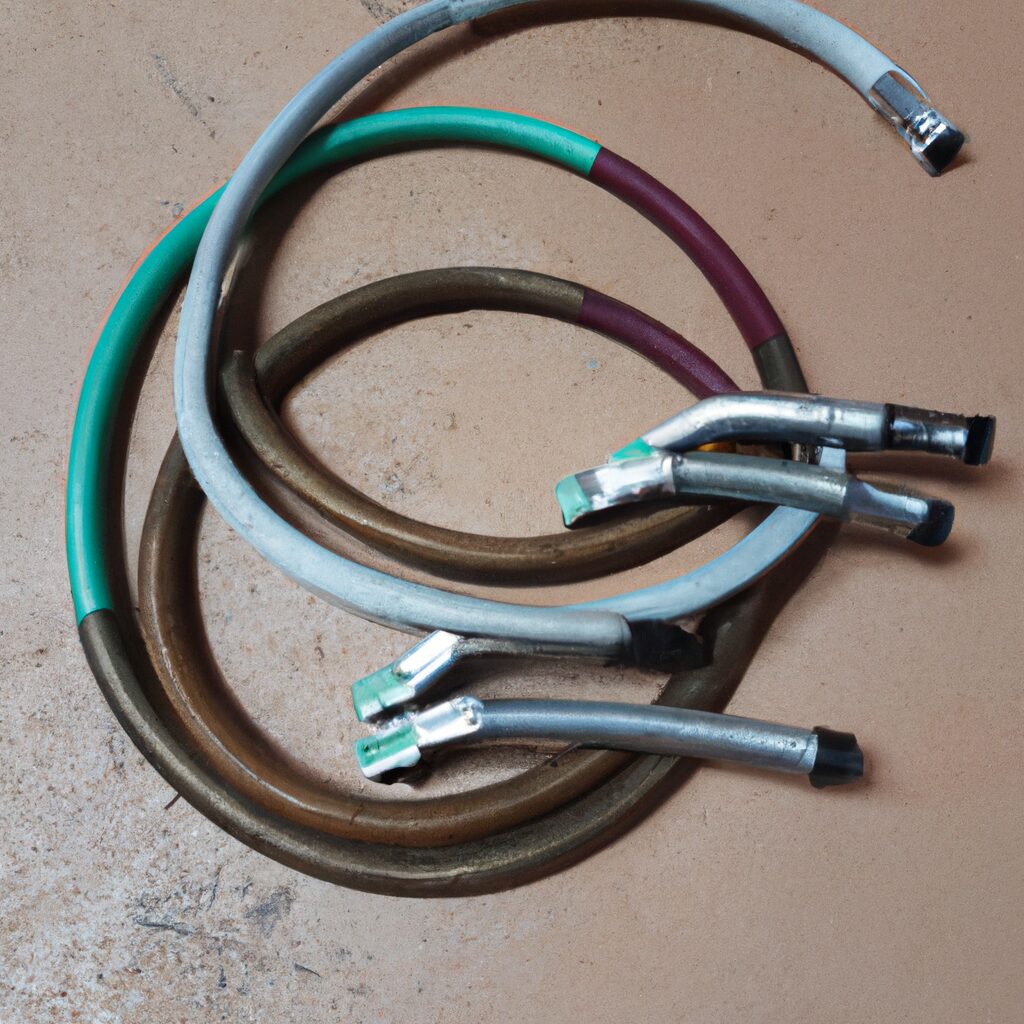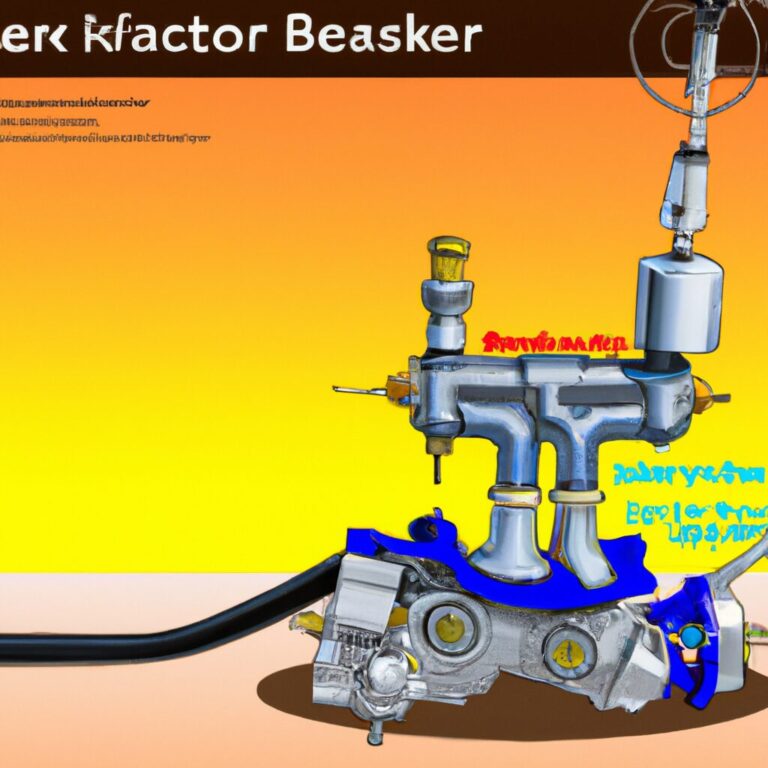what size tubing for bleeding brakes
Introduction
When it comes to bleeding brakes, the size of the tubing you use is an important factor. The size of the tubing you use will determine the amount of pressure that is applied to the brake system, as well as the amount of fluid that can be moved through the system. It is important to select the right size tubing for your brake system in order to ensure that the brakes are bled properly and that the system is functioning correctly. In this article, we will discuss the different sizes of tubing available and how to choose the right size for your brake system.
How to Choose the Right Size Tubing for Bleeding Brakes
When it comes to bleeding brakes, the size of the tubing you use is an important factor. The right size tubing will ensure that the brake fluid flows freely and efficiently, while the wrong size tubing can cause blockages and other issues. Here are some tips to help you choose the right size tubing for bleeding brakes.
First, consider the size of the brake caliper. The size of the tubing should be slightly larger than the size of the brake caliper. This will ensure that the brake fluid can flow freely and without any blockages.
Second, consider the type of brake fluid you are using. Different types of brake fluid require different sizes of tubing. For example, DOT 3 brake fluid requires a larger size tubing than DOT 4 brake fluid.
Third, consider the length of the tubing. The length of the tubing should be long enough to reach from the brake caliper to the reservoir. This will ensure that the brake fluid can flow freely and without any blockages.
Finally, consider the material of the tubing. The material of the tubing should be compatible with the type of brake fluid you are using. For example, DOT 3 brake fluid should be used with a rubber or plastic tubing, while DOT 4 brake fluid should be used with a stainless steel tubing.
By following these tips, you can ensure that you choose the right size tubing for bleeding brakes. This will help to ensure that the brake fluid flows freely and without any blockages.
What Are the Benefits of Using the Correct Size Tubing for Bleeding Brakes?
Using the correct size tubing for bleeding brakes is essential for ensuring the brakes are working properly. The correct size tubing ensures that the brake fluid is able to flow freely and efficiently through the brake system. This helps to reduce the risk of air bubbles forming in the brake system, which can cause the brakes to malfunction. Additionally, using the correct size tubing helps to reduce the risk of brake fluid leakage, which can lead to a decrease in brake performance.
Using the correct size tubing also helps to ensure that the brake system is properly sealed. This helps to prevent dirt and debris from entering the brake system, which can cause damage to the brake components. Additionally, using the correct size tubing helps to reduce the risk of brake fluid contamination, which can lead to a decrease in brake performance.
Overall, using the correct size tubing for bleeding brakes is essential for ensuring the brakes are working properly. The correct size tubing helps to reduce the risk of air bubbles forming in the brake system, brake fluid leakage, and brake fluid contamination. Additionally, it helps to ensure that the brake system is properly sealed and prevents dirt and debris from entering the brake system.
What Are the Different Types of Tubing Used for Bleeding Brakes?
When it comes to bleeding brakes, there are several types of tubing that can be used. The most common type of tubing used is rubber tubing, which is flexible and easy to work with. This type of tubing is often used in conjunction with a vacuum pump to help draw out the air and fluid from the brake system.
Another type of tubing used for bleeding brakes is steel tubing. This type of tubing is more rigid than rubber tubing and is often used in more complex brake systems. Steel tubing is also more resistant to corrosion and can withstand higher temperatures than rubber tubing.
A third type of tubing used for bleeding brakes is plastic tubing. This type of tubing is lightweight and easy to work with, but it is not as durable as rubber or steel tubing. Plastic tubing is also not as resistant to corrosion and can be damaged by certain chemicals.
Finally, there is also flexible brake line tubing. This type of tubing is designed to be used in tight spaces and is often used in conjunction with a special tool to help draw out the air and fluid from the brake system.
No matter which type of tubing is used for bleeding brakes, it is important to make sure that it is properly installed and that all connections are secure. This will help ensure that the brakes are properly bled and that the system is functioning correctly.
How to Install the Right Size Tubing for Bleeding Brakes
Bleeding brakes is an important part of maintaining your vehicle’s braking system. It is important to use the right size tubing when bleeding brakes to ensure that the brake fluid is able to flow freely and that the brakes are working properly. Here are the steps for installing the right size tubing for bleeding brakes:
1. Determine the size of the brake line. The size of the brake line will depend on the type of vehicle you have. Consult your vehicle’s manual or a mechanic to determine the size of the brake line.
2. Purchase the correct size tubing. Once you know the size of the brake line, you can purchase the correct size tubing. Make sure to purchase tubing that is specifically designed for brake lines.
3. Cut the tubing to the correct length. Measure the length of the brake line and cut the tubing to the same length. Make sure to leave a few extra inches of tubing in case you need to make adjustments.
4. Attach the tubing to the brake line. Use a wrench to attach the tubing to the brake line. Make sure the connection is secure and that there are no leaks.
5. Test the connection. Once the tubing is attached, test the connection by pumping the brakes. If the brakes are working properly, the tubing is installed correctly.
Following these steps will ensure that you have installed the right size tubing for bleeding brakes. This will help ensure that your brakes are working properly and that the brake fluid is able to flow freely.
What Are the Common Mistakes to Avoid When Bleeding Brakes with Tubing?
When bleeding brakes with tubing, it is important to take the necessary precautions to ensure the process is done correctly. Common mistakes to avoid include:
1. Not using the correct tubing size: It is important to use the correct size tubing for the brake system. If the tubing is too small, it can cause a restriction in the brake line, resulting in poor brake performance.
2. Not using the correct fluid: Different brake systems require different types of brake fluid. Using the wrong type of fluid can cause damage to the brake system and lead to poor brake performance.
3. Not bleeding the brakes in the correct order: Bleeding the brakes in the wrong order can cause air to become trapped in the system, resulting in poor brake performance. It is important to follow the manufacturer’s instructions when bleeding the brakes.
4. Not checking for leaks: After bleeding the brakes, it is important to check for any leaks in the system. Leaks can cause air to enter the system, resulting in poor brake performance.
5. Not replacing the brake fluid: Brake fluid should be replaced every two years or as recommended by the manufacturer. Old brake fluid can cause damage to the brake system and lead to poor brake performance.
How to Troubleshoot Problems with Bleeding Brakes and Tubing
Bleeding brakes and tubing can be a tricky process, but it is important to ensure that your brakes are working properly. If you are having trouble with your brakes, here are some steps to help you troubleshoot the problem.
1. Check the Brake Fluid Level: Make sure that the brake fluid level is at the correct level. If it is too low, you may need to add more fluid.
2. Inspect the Brake Lines: Inspect the brake lines for any signs of damage or corrosion. If there is any damage, you may need to replace the lines.
3. Check the Brake Pads: Make sure that the brake pads are in good condition and not worn down. If they are worn down, you may need to replace them.
4. Bleed the Brakes: If the brake fluid level is correct and the brake lines and pads are in good condition, you can begin to bleed the brakes. This process involves opening the bleeder valve and allowing the old brake fluid to escape.
5. Check the Tubing: Make sure that the tubing is not clogged or damaged. If it is, you may need to replace it.
6. Test the Brakes: Once you have bled the brakes and checked the tubing, you can test the brakes to make sure they are working properly.
Following these steps should help you troubleshoot any problems you may be having with your brakes and tubing. If you are still having trouble, it is best to consult a professional mechanic for further assistance.
What Are the Best Practices for Bleeding Brakes with Tubing?
When bleeding brakes with tubing, it is important to follow best practices to ensure the brakes are bled correctly and safely.
First, make sure the vehicle is parked on a level surface and the parking brake is engaged. This will help ensure the brake fluid does not leak out of the system.
Next, locate the brake fluid reservoir and check the fluid level. If the fluid level is low, top it off with the appropriate type of brake fluid.
Then, locate the bleeder valve on the brake caliper or wheel cylinder. Attach a length of clear plastic tubing to the bleeder valve and place the other end of the tubing in a container filled with brake fluid.
Next, have an assistant press the brake pedal slowly and steadily. As the pedal is pressed, open the bleeder valve and allow the fluid to flow through the tubing. Once the pedal is released, close the bleeder valve.
Repeat this process until the brake fluid coming out of the bleeder valve is free of air bubbles. Once the brakes have been bled, top off the brake fluid reservoir and check for leaks.
Finally, it is important to dispose of the used brake fluid properly. Brake fluid is toxic and should not be poured down the drain or into the environment.
How to Maintain the Right Size Tubing for Bleeding Brakes
Maintaining the right size tubing for bleeding brakes is an important part of ensuring the brakes on your vehicle are working properly. Bleeding brakes is a process that involves removing air from the brake lines, and the size of the tubing used is critical to the success of the process. Here are some tips for maintaining the right size tubing for bleeding brakes.
First, it is important to understand the size of tubing that is required for your vehicle. The size of the tubing will depend on the type of brakes you have, as well as the make and model of your vehicle. Consult your vehicle’s owner’s manual or a professional mechanic to determine the correct size tubing for your vehicle.
Once you have determined the correct size tubing, it is important to ensure that the tubing is in good condition. Inspect the tubing for any signs of wear or damage, such as cracks, tears, or kinks. If the tubing is damaged, it should be replaced with new tubing of the same size.
It is also important to ensure that the tubing is properly connected to the brake lines. Make sure that the tubing is securely connected to the brake lines and that there are no leaks. If there are any leaks, the tubing should be replaced.
Finally, it is important to check the tubing regularly to ensure that it is still the correct size. Over time, the tubing may become worn or stretched, which can affect the effectiveness of the bleeding process. If the tubing is not the correct size, it should be replaced with new tubing of the same size.
By following these tips, you can ensure that the right size tubing is used for bleeding brakes on your vehicle. This will help to ensure that your brakes are working properly and that the bleeding process is successful.
Q&A
Q: What size tubing should I use for bleeding brakes?
A: The size of tubing you should use for bleeding brakes depends on the type of brake system you have. Generally, 3/16 inch or 5/32 inch tubing is used for most brake systems. However, some systems may require a different size. It is best to consult your vehicle’s manual or a professional mechanic to determine the correct size for your system.
Conclusion
In conclusion, the size of tubing for bleeding brakes should be determined by the size of the brake caliper and the type of brake fluid being used. If the brake caliper is larger, then a larger size tubing should be used. If the brake fluid is a higher viscosity, then a larger size tubing should be used. Ultimately, the size of the tubing should be chosen based on the specific needs of the vehicle and the brake system.



